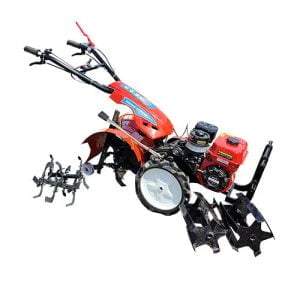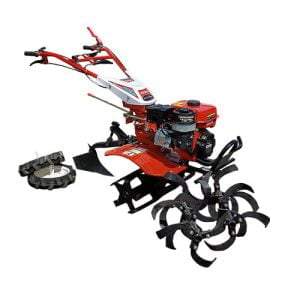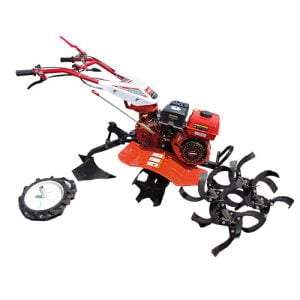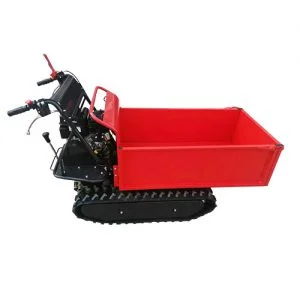Unlocking Agricultural Potential: The Versatility of Walking Tractors
Introduction

Innovations in agriculture have continuously reshaped the farming landscape, and walking tractors stand as a testament to this evolution. Their versatility, efficiency, and adaptability have revolutionized small-scale and medium-scale farming across the globe. This blog explores the multifaceted nature of walking tractors, delving into their various applications, benefits, and potential for enhancing agricultural productivity.
Understanding
Walking Tractors Walking tractors, also known as two-wheel tractors or hand tractors, are compact, single-axle agricultural machines designed to perform a multitude of tasks with ease. Powered by either gasoline or diesel engines, these versatile machines are equipped with various attachments that enable them to plow, cultivate, seed, weed, and transport goods across diverse terrains. Their lightweight yet robust construction makes them suitable for small farms, orchards, vineyards, and hilly terrains where larger agricultural machinery may struggle to operate efficiently.
Applications of Walking Tractors
- Plowing and Cultivation: Push tractor excel in preparing seedbeds, breaking soil, and cultivating crops. Their maneuverability and adjustable tilling depth make them indispensable for small-scale farmers seeking efficient land preparation methods.
- Seeding and Planting: With the appropriate attachments, push tractors facilitate precise seeding and planting operations, ensuring optimal spacing and uniformity for improved crop yields.
- Weeding and Inter-Cultural Operations: The agility of push tractors allows farmers to navigate between rows of crops, performing crucial weeding and inter-cultural operations without damaging delicate plants. This promotes weed control and facilitates better nutrient absorption for healthier crops.
- Transportation: Walking tractors can be fitted with trailers or carts, enabling farmers to transport harvested crops, equipment, and other agricultural inputs with ease. This enhances logistical efficiency and reduces manual labor requirements on the farm.
- Irrigation and Spraying: By attaching irrigation pumps or spraying equipment, push tractors facilitate efficient water distribution and pest management, contributing to enhanced crop health and productivity.
Benefits of Walking Tractors
- Cost-Effectiveness: Walking tractors offer a cost-effective alternative to larger, more expensive agricultural machinery, making them accessible to smallholder farmers with limited resources.
- Versatility: The ability to perform multiple tasks with one machine increases operational flexibility and efficiency, allowing farmers to adapt to varying agricultural needs throughout the growing season.
- Sustainability: Push tractors consume less fuel and have a smaller environmental footprint compared to larger tractors, promoting sustainable farming practices and reducing greenhouse gas emissions.
- Accessibility: Their compact size and maneuverability enable push tractors to access areas inaccessible to larger machinery, including narrow rows, steep slopes, and densely planted crops, maximizing land utilization.
- Empowerment: By empowering farmers with tools that enhance productivity and profitability, push tractors play a vital role in rural development, poverty alleviation, and food security initiatives worldwide.
Here’s a simple table showcasing the various attachments and applications of walking tractors:

| Attachment | Application |
|---|---|
| Plow | Land preparation, soil turning |
| Cultivator | Weed control, seedbed preparation |
| Seeder/Planter | Precise seeding, planting |
| Harrow | Soil leveling, breaking clods |
| Trailer/Cart | Crop transportation, equipment hauling |
| Irrigation Pump | Water distribution, irrigation |
| Sprayer | Pest control, crop protection |
| Rotary Tiller | Soil aeration, weed control |
| Ridger | Ridge formation for crops |
| Mower | Grass cutting, vegetation management |
FAQ
Q: What is the difference between a walking tractor and a conventional tractor?
A: Walking tractors are smaller, lighter, and more maneuverable than conventional tractors. They typically have a single axle and are designed for small-scale farming operations, whereas conventional tractors are larger and more suitable for large-scale mechanized agriculture.
Q: Are walking tractors suitable for all types of crops?
A: While push tractors can be used for a wide range of crops, they are particularly well-suited for small-scale and diversified farming systems. They excel in cultivating vegetables, fruits, grains, and other row crops, as well as in orchards, vineyards, and nurseries.
Q: Can walking tractors be operated by individuals with limited experience?
A: Yes, walking tractors are relatively easy to operate and require minimal training. However, proper safety precautions should be followed, and beginners may benefit from hands-on guidance or instructional resources provided by manufacturers or agricultural extension services.
Conclusion
Walking tractors represent a paradigm shift in agricultural mechanization, offering smallholder farmers a versatile and affordable solution to enhance productivity, profitability, and sustainability. Their adaptability to diverse farming systems and terrain conditions makes them indispensable tools for unlocking the full potential of agricultural landscapes worldwide. By harnessing the power of walking tractors, farmers can cultivate a brighter future for themselves, their communities, and the planet.



